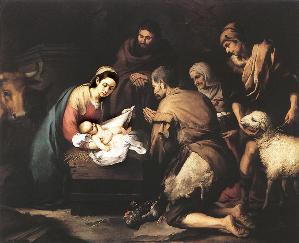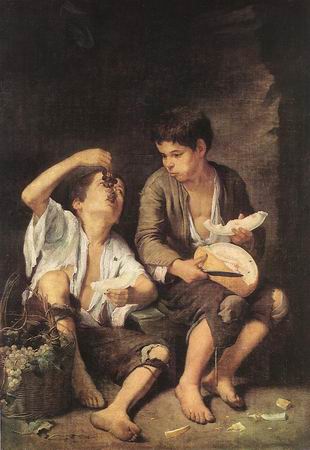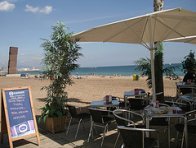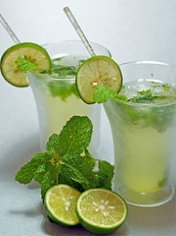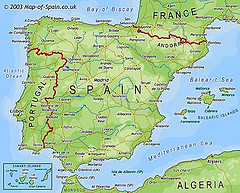| Bartolomé Esteban Murillo 1617-82 |
|
|
Born in Seville, Murillo studied with Juan del Castillo but he was strongly influenced by some the great painters such as Ribera and Zurbaran. The city of Seville was a great commercial centre and Murillo would have benefited from exposure to other areas of Spain and Europe. Flemish influence was also very powerful around that time.
Adoration of the shepherds |
|
|
Like so many painters of his time, he completed a large collection of religious work. However he was interested in ordinary people in the street and created a range of paintings which reflected the Spain of his era. In his mid twenties he worked in Madrid for a few years and he experienced the vast array of Masters works in the royal collections.
Boys eating fruit |
|
|
| On returning to his home city he completed some highly regarded work for a monastery called St Francis el Grande, and paintings for the Cathedral. These and other works showed a refined style typical of the aristocratic preferences he had seen in Madrid.
The Annunciation |
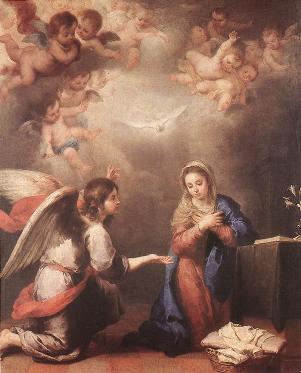 |
|
He probably used his practice on the Madonna of the Rosary and Madonna and Child, when his wife and daughter were models, as a stepping stone to his renown Immaculate Conception, and the Virgin and Child.
Immaculate conception |
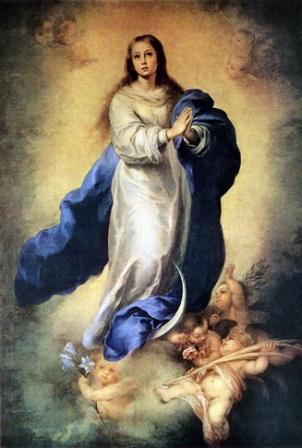 |
|
His reputation in Seville was consolidated by the time he returned from his second spell in Madrid in 1660. He helped to found and direct the Academia de Bellas Artes and he was extremely busy with a full portfolio of works from many quarters. He created the altarpieces for the Augustinian monastery and paintings for Santa Maria la Blanca.
The heavenly and earthly trinities |
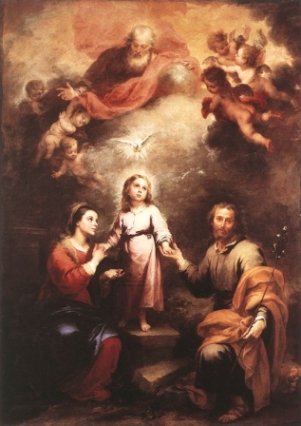 |
|
In summary, Murillo was one of the most influential artists of the Baroque period and had many students and imitators. His work was probably the most recognised of any other Spanish painter prior to the more modern era. |
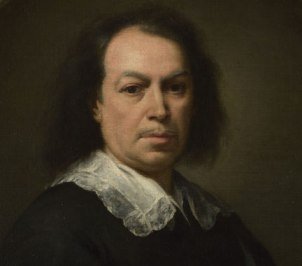 |
|
|
Other Spanish artists in addition to
